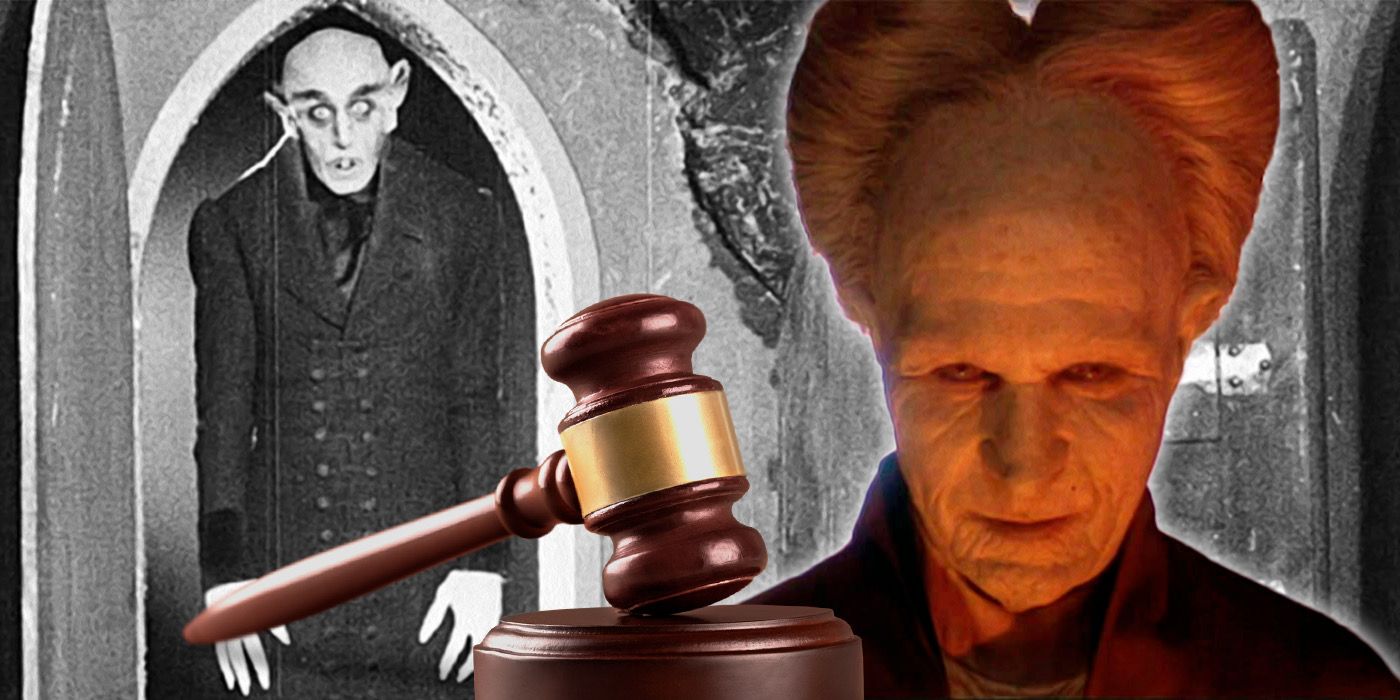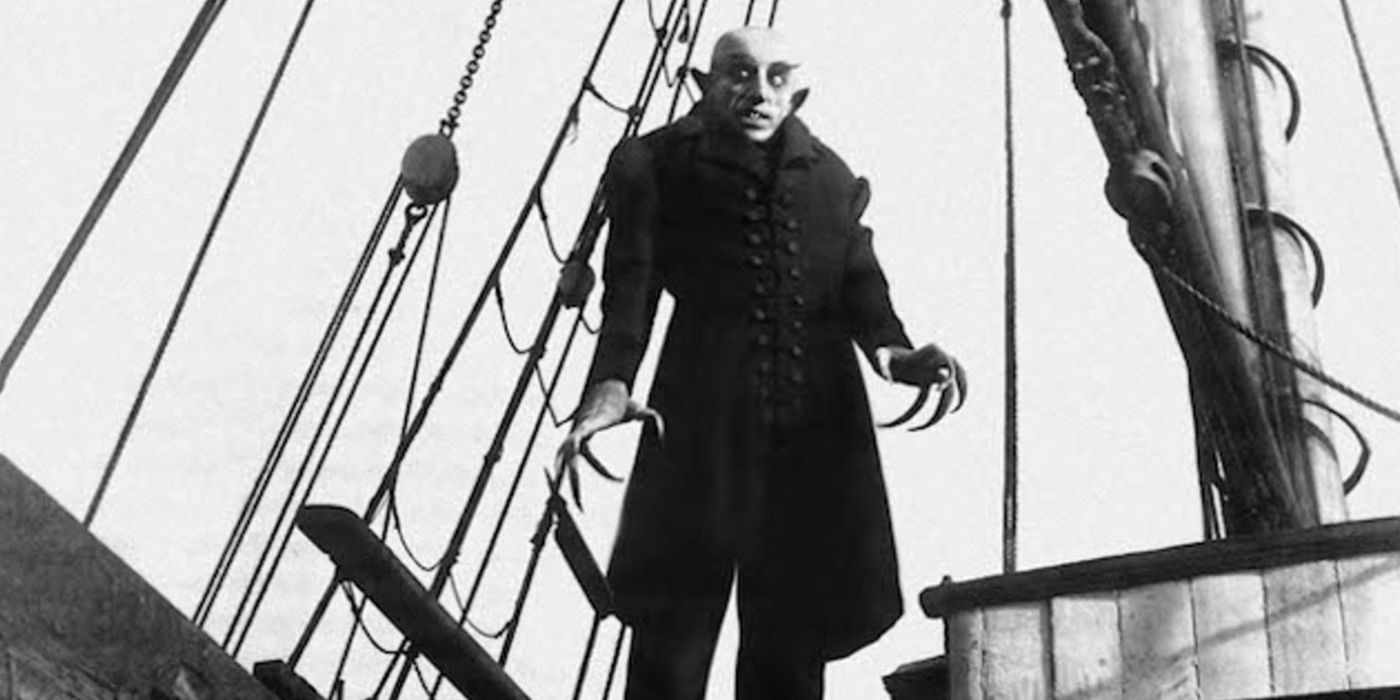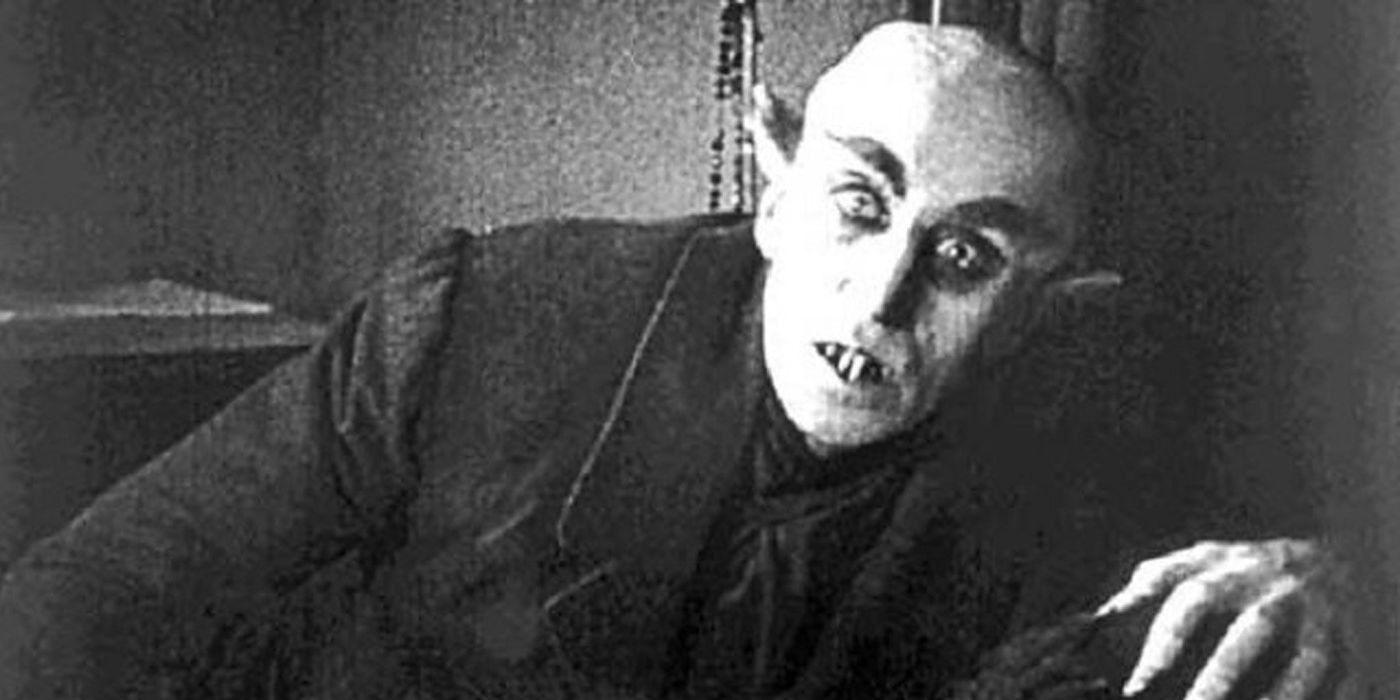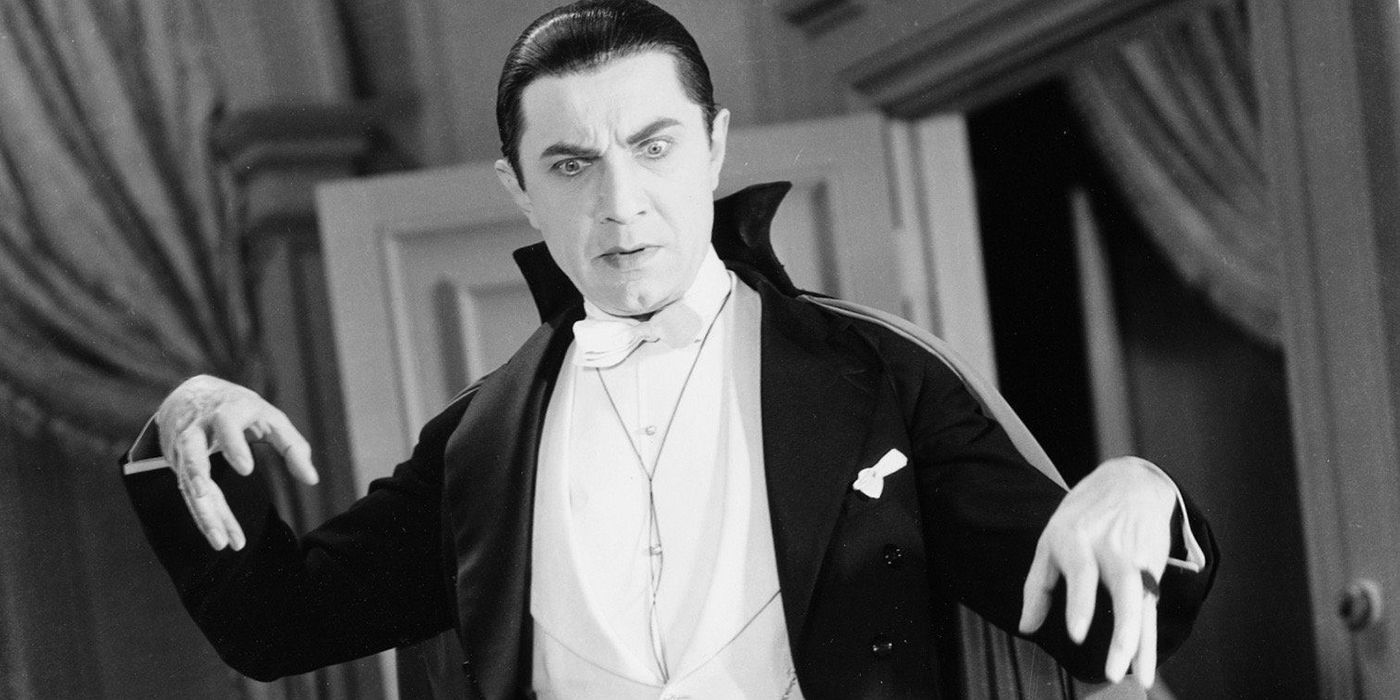Dracula and the elements that make a vampire didn't all come from Bram Stoker's novel. After Nosferatu first premiered in Germany, exactly 100 years ago, Florence Stoker, the author's widow, attempted to sue the filmmakers over a freely adapted script, later creating a copyright lawsuit nightmare that almost killed the movie. The aura around this subject fascinated audiences and artists, which created the lore that defines modern vampires today.
Back in March of 1922, Nosferatu opened in German theaters. The film was the first production of Prana Film and was directed by F. W. Murnau. It was a premiere of pomp and circumstance in what would later be considered the first horror movie ever made and a prime example of the Expressionist movement in film. Nosferatu's premiere program remarkably said it was "freely adapted" from Bram Stoke's novel Dracula.
While Bram Stoker is now recognized as one of the most influential writers of Gothic literature, he never enjoyed its success while living, nor did his wife, for that matter. However, he was a notorious business manager at the Lyceum Theatre in London. When he passed away in 1912, Florence was left with an amount of debt, which was still quite considerable even after she auctioned most of her late husband's belongings. Curiously enough, her only source of income or notoriety became Dracula, a mild literary success that she felt embarrassed of and rather indifferent to. Her husband's other published works never sold well and, by 1922, were out of print.
In April of that year, Florence Stoker received an unmarked letter with Nosferatu's German premiere program. It is assumed that before that moment, she had no knowledge whatsoever about the film's production or existence. It is no surprise that, given her financial circumstances, she'd want to pursue a lawsuit against Prana Film and its filmmakers. Indeed, the film used most of the origins present in the book, even if the filmmakers made minor changes to it, including character names and the title. It is unclear what made them overlook the question of copyright.
The lawsuit was a horror of its own kind. By 1924, Florence was in court with Prana Film, and after a series of appeals that were stopping her from getting the initial financial amount she was owed for copyrights, she demanded that all copies of the film be destroyed. And so, it was ordered by the German courts. Nosferatu's copies were thoroughly pursued and burned. To Florence, Nosferatu was dead and buried.
During these trials, and sensing that her finances would always be fraught, Florence reluctantly agreed to a proposal by actor Hamilton Deane to adapt Dracula into a traveling play for the UK's countryside. Although a laughing stock between critics, the traveling play was sold out in every small town. However, it ignored most of the dialogue from the novel and created an image of the famed count that persisted -- with a tuxedo and a cape. Not long afterward, this play was readapted in the U.S., where it starred none other than Bela Lugosi, who later immortalized Count Dracula in the films produced by Universal Pictures, legally approved by Florence Stoker.
In the meantime, a miraculous thing happened: a copy of Nosferatu that somehow survived was also brought to the U.S. Given that Dracula was already in the public domain there, no U.S. court could order its destruction. The film slowly started to gain an audience and created an aura of fascination that only increased with the making of more vampire films based on Stoker's novel. By the 1960s, Nosferatu was already considered a horror classic and declared the first vampire flick. Dracula and Nosferatu would shape the rules for the vampire stories that followed.
One of the main changes in Murnau's film included Orlok being killed by sunlight, while it merely affects his skin in Stoker's novel. Orlok is also presented as a grotesque killer whose shadow has a life of its own, unlike the suave Dracula from the novel, who turns his victims into vampires. From then on, the various iterations of the famed count cemented the vampire lore. Stoker's novel presented an image of a changing, conquering, modern world, whereas Nosferatu was a critical view of how the medieval age still corrupted society. Nowadays, vampire stories are used to highlight controversial themes around morality and masculinity.
Nevertheless, if it wasn't for Nosferatu's failed attempts to avoid a lawsuit, a play might never have happened, and public interest might not have peaked and drawn the attention of Universal Pictures. Considered dead, Nosferatu almost literally rose from the ashes -- and just like a vampire, it survives today, exactly one century later.




